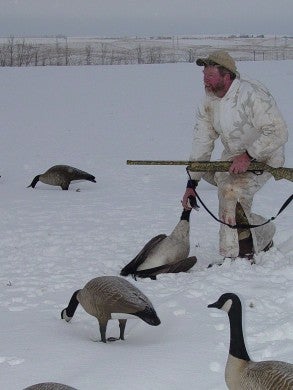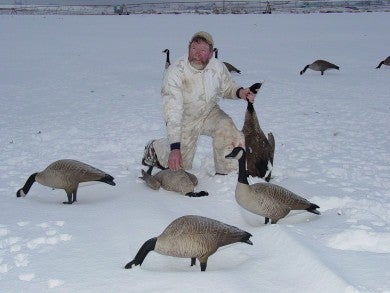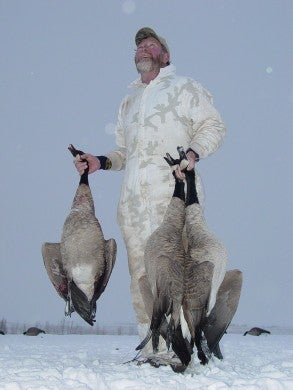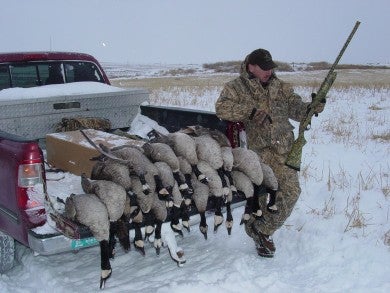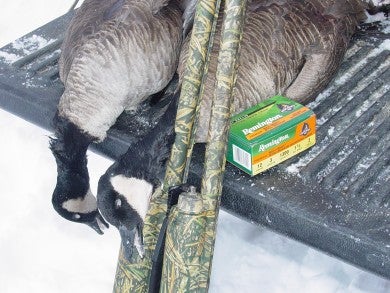Washington Waterfowl Wonderland
Bob McNally 01.04.16
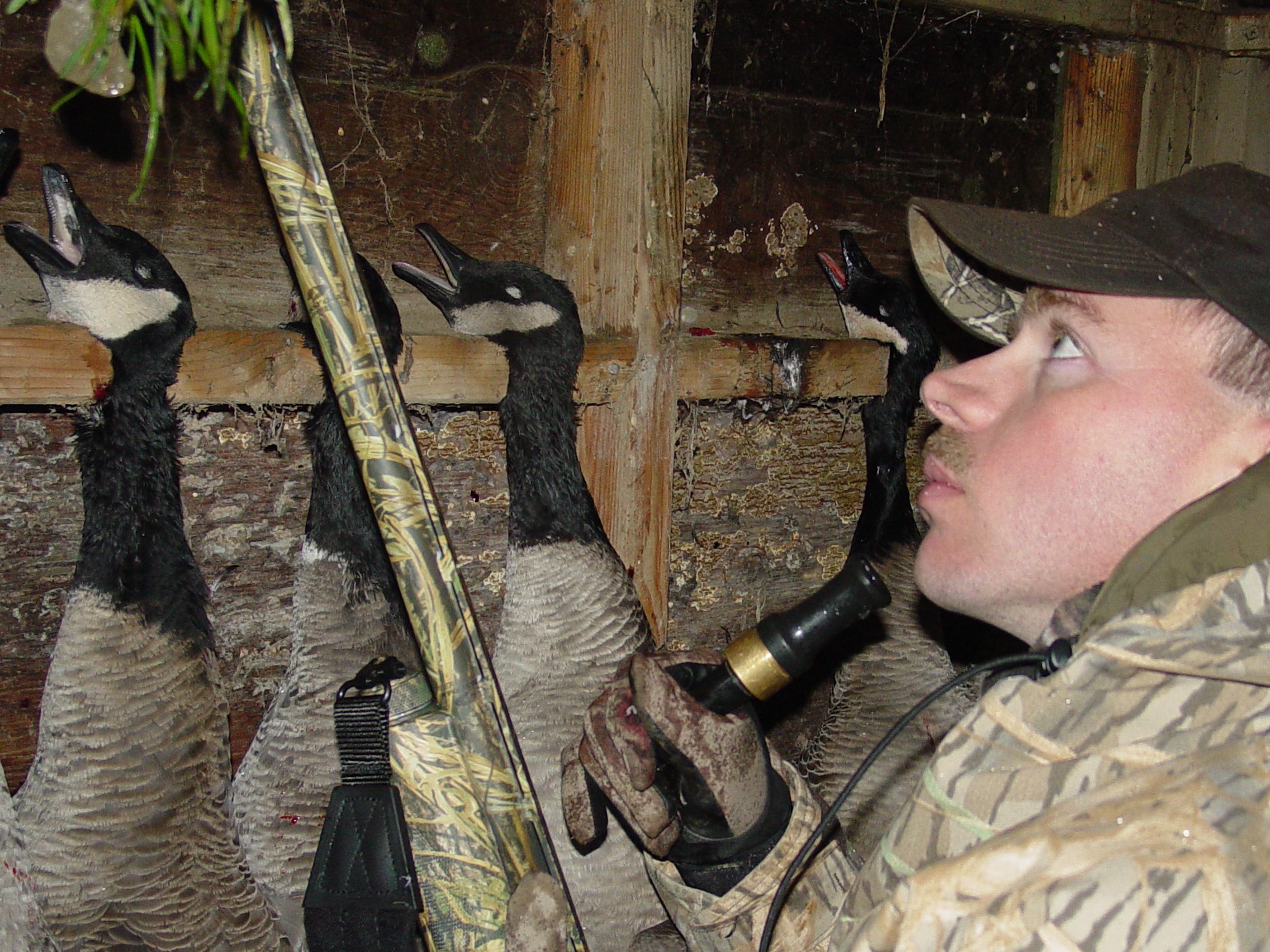
All eyes squinted through our pit blind roof cracks, as six of us intently watched the flock of 10 “locked up” Canada geese swing wide of our decoy spread. The birds made two passes high and beyond our barley field hunting spot, each time dropping lower as they surveyed the landing zone.
Guide Eddie Bitseff growled a couple times into his goose call, and outfitter-guide Paul Sullivan added some realistic honks to dupe the birds into committing a landing.
Seconds ticked by and no one moved, no one breathed, as we watched the oversize waterfowl glide gently into the decoys, settling like oversize black-and-white parachutes against a strong Western daybreak wind.
“Okay, let’s take ‘em, but lower the pit blind roofs quietly and come up slowly–kind of sneaky like,” Paul said. “They don’t know we’re here and that’ll give everyone plenty of time to shoot.
In 48 years of hunting honkers that was the first time I S-L-O-W-L-Y stood to shoot at incoming waterfowl. We got up in unison, and it took a moment or two to locate the real geese from lifelike decoys positioned just 20 yards beyond our blind. All the live geese had landed, but none flushed when we looked over the lip of the pit to shoot.
“Haaa!!!! Haaaa!!!! Get Up!!!!!” Paul shouted, which did the trick as the geese went airborne.
Six Remington 1187s working on flushing geese inside 30 yards is going to produce some downed birds, and only two of the incoming 10 honkers left the scene. While good shooting helped that tally of geese, there was no question the shotshells we employed had much to do with the high harvest, too.
Using Remington “Wingmaster HD”, 3-inch, 12-gauge shells, loaded with 1.5 ounces of number 2 pellets, we collected our legal limits of 24 geese in less than one hour hunting. While I don’t know how many shots our group fired to collect those limits, three of us only used 22 shots, and I believe doubling that figure–or 44 shots fired–is a solid approximate. In this era of non-toxic shot, for greater Canada geese, that’s a pretty remarkable shot-per-bird-harvested average.
And we did it in two consecutive mornings, with virtually the same number of birds collected and shots fired.
Following those dawn goose hunts, we moved from a field pit to large nearby ponds for ducks. Snow and ice made duping ducks difficult, but we still managed respectable harvests and Wingmaster HD number 4 shells proved just as effective on mallards as number 2s did for geese.
Wingmaster HD is made of an alloy heavier than lead, and I believe it works at least as good as old copper-coated lead shot. Wingmaster HD shells are considerably more expensive than steel shotshells, but it sure works a lot better on waterfowl. So I think Wingmaster HD is actually less expensive to use, and game is harvested quicker and cleaner.
“I’m a big believer in Wingmaster HD, too,” replied Paul, who runs Burbank Guide Service in Pasco, Washington, near the junction of the waterfowl rich Columbia and Snake rivers. “Nothing is as effective on geese and ducks, and we see hundreds taken in my blinds and pits every year.”
Burbank Guide Service offers duck and goose hunting well into January. For more information phone 509-545-8000, or check their website: www.burbankgoose.com.
